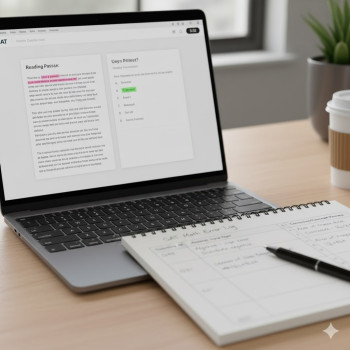Why this matters: SAT and Brown University in the modern admissions landscape
If you’re a student—or a parent helping one—aiming for Brown University, you’re probably juggling transcripts, essays, extracurriculars, and the ever-present question: do I need to take the SAT? The answer isn’t a flat yes or no anymore. Over the past few admission cycles, colleges have adjusted policies, and Brown’s approach to standardized testing now needs a thoughtful, strategic response from applicants.

Short answer: What Brown expects about SAT scores (simple snapshot)
Brown considers SAT scores when they are submitted, and recent admitted-student ranges give a clear target for competitive applicants. While Brown practices holistic review—meaning they weigh grades, course rigor, essays, recommendations, and activities—SAT scores can still strengthen an application, especially when they fall within or above the university’s typical range.
What a competitive SAT looks like for Brown
- A composite Digital SAT score in the upper end of the reported range for admitted students—students who want to be competitive often aim for the top quartile of that range.
- Strong subsection performance: Evidence-Based Reading & Writing and Math scores that indicate solid critical reading, grammar, and quantitative reasoning.
- Consistent standardized-test record: If available, PSAT or other practice test results that track toward the desired SAT target.
Understanding the numbers: SAT ranges and what they mean for you
College-reported SAT ranges are a helpful benchmark. Think of them as a snapshot of where most admitted students score—not a bright-line cutoff. A score inside the range doesn’t guarantee admission; a score outside doesn’t close the door. Use the range to calibrate your goals, practice intensity, and where you might need outside help.
| Metric | What it shows | How to use it |
|---|---|---|
| Reported SAT Range | Typical composite scores of admitted students | Set your target at or above the 75th percentile for a competitive edge |
| Subscore balance | Shows strengths/weaknesses in evidence-based reading & writing vs. math | Plan focused study by subject rather than only full-length practice tests |
| Test-optional policy status | Whether submitting a score is required, recommended, or optional | Decide whether your score strengthens your holistic application |
How to interpret your scores relative to Brown
If your composite SAT sits comfortably within the middle-to-upper part of Brown’s reported range, that score is likely to be viewed favorably—especially paired with a strong transcript, compelling essays, and standout recommendations. If your score is below the range, consider whether your other application elements can convincingly demonstrate readiness and fit; if not, a stronger SAT could materially improve your chances.
Digital SAT specifics: format, strategy, and what changed
The SAT has moved to a digital platform. That changes pacing, question presentation, and preparation tactics. Digital testing tends to be shorter with different navigation (e.g., a student can often move back and forth within sections) and adaptive elements that change difficulty based on performance.
Practical study implications of the Digital SAT
- Practice on a screen. Simulate test conditions with full-length digital practice tests so your eyes, timing, and note-taking workflow adapt to the platform.
- Learn the navigation. The ability to flag and revisit questions, or to work efficiently within time-blocks, changes how you allocate minutes across problems.
- Focus on reasoning and evidence. The Digital SAT emphasizes analysis and application—strong reading comprehension and strategic problem-solving are essential.
When to take the SAT: a timeline for juniors and seniors
Timing can affect your prep quality and application strategy. Here’s a practical timeline you can adapt based on whether you’re a rising junior, current junior, or senior.
Sample timeline (for a student aiming to apply Regular Decision in a typical admissions cycle)
- Spring of junior year: Take a PSAT practice or the official PSAT/NMSQT to gauge your baseline and qualify for National Merit if applicable. Use results to set a target Digital SAT score.
- Summer before senior year: Begin focused prep—review fundamentals, practice on digital platforms, build test stamina, and target weak subskills.
- Fall of senior year (Sept–Nov): Take an official Digital SAT at least once; many students take one test in October or November to allow time for a retake if necessary.
- Late fall/winter: If you need improvement, retake the test by December–January to ensure scores can be submitted with applications (or by early decision deadlines).
Strategic decision: to submit or not to submit your SAT score?
Because Brown uses holistic review and may consider submitted scores if provided, your decision to submit should be tactical. Consider submitting if your SAT score is within or above the typical admitted range and adds demonstrable strength to your academic profile. If your score is below that range, but you have clear mitigating context—like a strong upward grade trend, exceptional extracurricular achievements, or other test evidence—you might choose not to submit.
Questions to ask before submitting scores
- Does this score align with the strength of my transcript and course rigor?
- Would this score make my application more compelling (for scholarships, certain programs, or comparative contexts)?
- Is there recent evidence (PSAT, SAT practice tests) showing improvement that suggests a retake would raise my profile?
Preparation plan: focused, efficient, and personalized
Preparation isn’t just hours logged—it’s quality, direction, and feedback. A student who studies randomly will burn time. A student with a plan gets better, faster. The best plans mix content review, active practice, error analysis, and real-time adjustments.
Core elements of a 12-week study plan
- Weeks 1–2: Diagnostic test and analysis. Identify targeted weaknesses in reading, writing, and math.
- Weeks 3–6: Focused skill blocks. Alternate content review (e.g., algebra fundamentals, evidence-based reading strategies) with practice sections.
- Weeks 7–9: Timed full-section practice and strategy tweaks. Learn pacing and navigation for the digital format.
- Weeks 10–12: Full-length digital practice tests under timed conditions, plus focused review of recurring mistakes.
How personalized tutoring accelerates progress
General tips are useful, but personalized instruction moves the needle faster. One-on-one tutoring identifies exactly why a student misses certain question types and provides tailored drills and strategies. For families considering extra support, Sparkl’s personalized tutoring approach—one-on-one guidance, tailored study plans, expert tutors, and AI-driven insights—can fit naturally into a focused prep plan: targeted diagnostics, customized lessons on weak areas, and progress tracking that adapts to real performance.
Practice smarter: actionable tactics for each section
Evidence-Based Reading & Writing
- Read actively: annotate passages with a two-line summary for each paragraph to speed comprehension.
- Answer based on evidence: always find the sentence or phrase in the passage that supports your choice.
- Practice vocabulary in context rather than memorizing lists—meaning arises from usage.
Math
- Master core concepts: algebra, functions, ratios, and data interpretation are high-yield.
- Use mental math and strategic estimation to save time on routine calculations.
- Work backwards on multiple-choice questions when algebra would take longer.
Timing and digital test navigation
- Flag vs. skip wisely: spending too long on a single problem costs points; flag hard items and return after easier ones.
- Practice with digital scratch space: get used to how you mark up questions on a tablet or laptop interface.
Putting your whole application together: how SAT fits into holistic review
Brown evaluates applicants in the round. That means admissions officers look at your academic record, course rigor, essays, teacher recommendations, and personal context. The SAT can strengthen the academic story or serve as additional evidence of readiness for Brown’s rigorous environment—but it won’t, by itself, secure admission.
When SAT scores make a difference
- Verifying academic readiness: For students from schools with varied grading or curricula, a strong SAT provides an objective data point.
- Scholarships and program placement: Some scholarship decisions or specific program considerations may factor standardized scores more heavily.
- Course placement: High scores in math or reading might influence placement decisions in first-year courses.
Sample decision flow: Should you take and submit the SAT to Brown?
Here’s a quick decision checklist to guide you.
- Baseline: Take a practice Digital SAT. If your score is at or above Brown’s typical admitted range, plan to submit.
- If below range but improving: schedule a retake and use focused tutoring or a structured study plan.
- If below range and not improving despite practice: weigh the strength of other application elements and consider not submitting—but consult with a counselor first.
Real-world examples: three applicant profiles
These hypothetical profiles show how SAT choices interact with broader applications.
Profile A: Strong SAT, strong academics
Student A scores in the upper part of Brown’s range, has rigorous honors/AP coursework, strong essays, and leadership in extracurriculars. Submitting SAT scores reinforces academic readiness and complements an already robust application.
Profile B: Modest SAT, stellar creative portfolio
Student B has a slightly below-range SAT but exceptional achievements in studio art and a portfolio that aligns with Brown’s open curriculum. In this case, the student might choose to submit scores if they complement the narrative or omit them if the rest of the application tells a stronger story. Consultation with an admissions counselor is valuable here.
Profile C: Rising improvement trend
Student C shows steady grade improvement and rising practice test scores. They schedule a retake and, after targeted tutoring to shore up weak areas, submit a significantly improved Digital SAT that helps complete the upward trajectory story.
Test day: practical checklist and mental game
- Hardware check: Know the allowed devices and what the digital testing platform requires. Practice on an identical device if possible.
- Rest and routine: Sleep well the night before; eat a balanced breakfast. Avoid last-minute cramming.
- Mindset: Approach the test as a problem-solving sprint. Small rituals—deep breaths, a quick warm-up problem—help focus.
Resources and support: maximizing efficiency without overwhelm
You don’t need to reinvent the wheel. Use official practice materials, timed digital tests, and targeted review tools. If you’re balancing schoolwork or other commitments, consider concentrated blocks of tutoring instead of open-ended studying—short, intense interventions yield better gains than unfocused hours.
How one-on-one tutoring can fit into a busy schedule
Personalized tutors give precise feedback, keep students accountable, and tailor lessons to immediate needs. Sparkl’s tutors, for example, combine 1-on-1 guidance, tailored study plans, expert tutors, and AI-driven insights to help students zero in on the strategies that produce score gains—especially helpful for students balancing APs, extracurriculars, and application deadlines.
Final thoughts: crafting the strongest application to Brown
Succeeding in the Brown admissions process is less about any single number and more about how you tell your academic story. The Digital SAT can be an important chapter in that story—an objective measure that, when strong, underscores your readiness for Brown’s rigorous and creatively open environment. When scores are modest, other elements—grades, essays, recommendations, and unique contributions—can and do carry weight.
Plan intentionally: take a diagnostic, build a focused study plan, use practice on the digital platform, and seek targeted feedback where you struggle. If you or your student benefit from personalized support, consider one-on-one tutoring to accelerate progress and boost confidence.

A short checklist to finish strong
- Take a diagnostic Digital SAT to set a realistic target.
- Create a 8–12 week plan with mixed practice and review.
- Practice on digital interfaces to build comfort and pacing.
- Consider targeted 1-on-1 tutoring if you need focused skill work.
- Decide on score submission based on how your SAT complements your whole application.
- Keep essays and recommendations polished—scores are only part of the story.
Need help getting started?
Applying to Brown is a meaningful journey. If you want a diagnostic or a tailored prep roadmap—one that balances time, content, and the digital platform—reach out to a trusted counselor or consider a short block of personalized tutoring. With the right plan and honest practice, you’ll approach your test date with calm and purpose.
Good luck—and remember: the SAT is one important voice in a larger chorus. Make sure the rest of your application sings just as clearly.















No Comments
Leave a comment Cancel